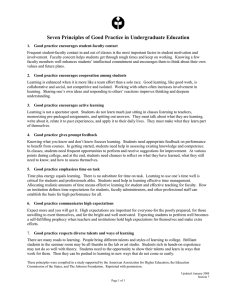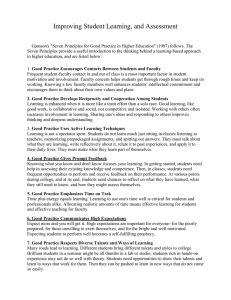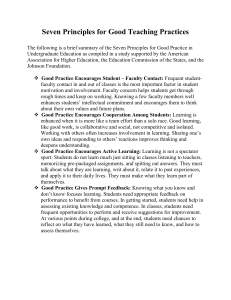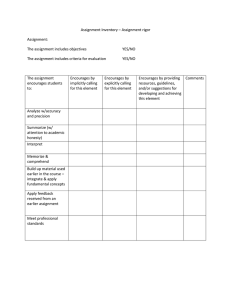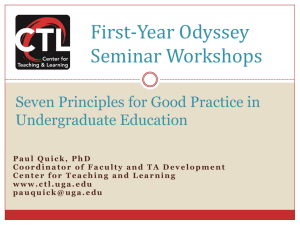Activity 2: The 7 Principles
advertisement
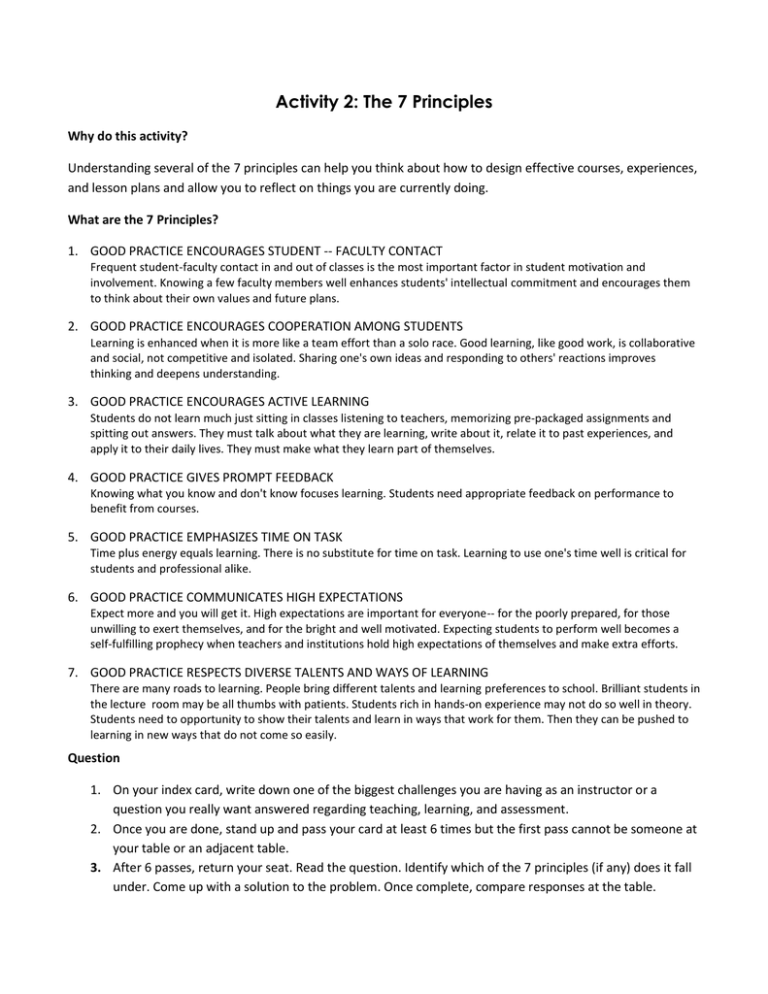
Activity 2: The 7 Principles Why do this activity? Understanding several of the 7 principles can help you think about how to design effective courses, experiences, and lesson plans and allow you to reflect on things you are currently doing. What are the 7 Principles? 1. GOOD PRACTICE ENCOURAGES STUDENT -- FACULTY CONTACT Frequent student-faculty contact in and out of classes is the most important factor in student motivation and involvement. Knowing a few faculty members well enhances students' intellectual commitment and encourages them to think about their own values and future plans. 2. GOOD PRACTICE ENCOURAGES COOPERATION AMONG STUDENTS Learning is enhanced when it is more like a team effort than a solo race. Good learning, like good work, is collaborative and social, not competitive and isolated. Sharing one's own ideas and responding to others' reactions improves thinking and deepens understanding. 3. GOOD PRACTICE ENCOURAGES ACTIVE LEARNING Students do not learn much just sitting in classes listening to teachers, memorizing pre-packaged assignments and spitting out answers. They must talk about what they are learning, write about it, relate it to past experiences, and apply it to their daily lives. They must make what they learn part of themselves. 4. GOOD PRACTICE GIVES PROMPT FEEDBACK Knowing what you know and don't know focuses learning. Students need appropriate feedback on performance to benefit from courses. 5. GOOD PRACTICE EMPHASIZES TIME ON TASK Time plus energy equals learning. There is no substitute for time on task. Learning to use one's time well is critical for students and professional alike. 6. GOOD PRACTICE COMMUNICATES HIGH EXPECTATIONS Expect more and you will get it. High expectations are important for everyone-- for the poorly prepared, for those unwilling to exert themselves, and for the bright and well motivated. Expecting students to perform well becomes a self-fulfilling prophecy when teachers and institutions hold high expectations of themselves and make extra efforts. 7. GOOD PRACTICE RESPECTS DIVERSE TALENTS AND WAYS OF LEARNING There are many roads to learning. People bring different talents and learning preferences to school. Brilliant students in the lecture room may be all thumbs with patients. Students rich in hands-on experience may not do so well in theory. Students need to opportunity to show their talents and learn in ways that work for them. Then they can be pushed to learning in new ways that do not come so easily. Question 1. On your index card, write down one of the biggest challenges you are having as an instructor or a question you really want answered regarding teaching, learning, and assessment. 2. Once you are done, stand up and pass your card at least 6 times but the first pass cannot be someone at your table or an adjacent table. 3. After 6 passes, return your seat. Read the question. Identify which of the 7 principles (if any) does it fall under. Come up with a solution to the problem. Once complete, compare responses at the table. Addressing the 7 Practices Practice Good practice encourages student -- faculty contact Instructor question (may take the form of) Good practice encourages cooperation among students e.g., How do I make group work more effective Good practice encourages active learning e.g., I am afraid of losing class time using active learning Good practice gives prompt feedback e.g., I don’t know how to give feedback to 100+ students Good practice emphasizes time on task e.g., I don’t have enough time to cover every things Good practice communicates high expectations e.g., How do I construct better assessments Good practice respects diverse talents and ways of learning e.g., How can I assess students when I have 100+. Multiple choice is the most efficient e.g., My students do not seem motivated
